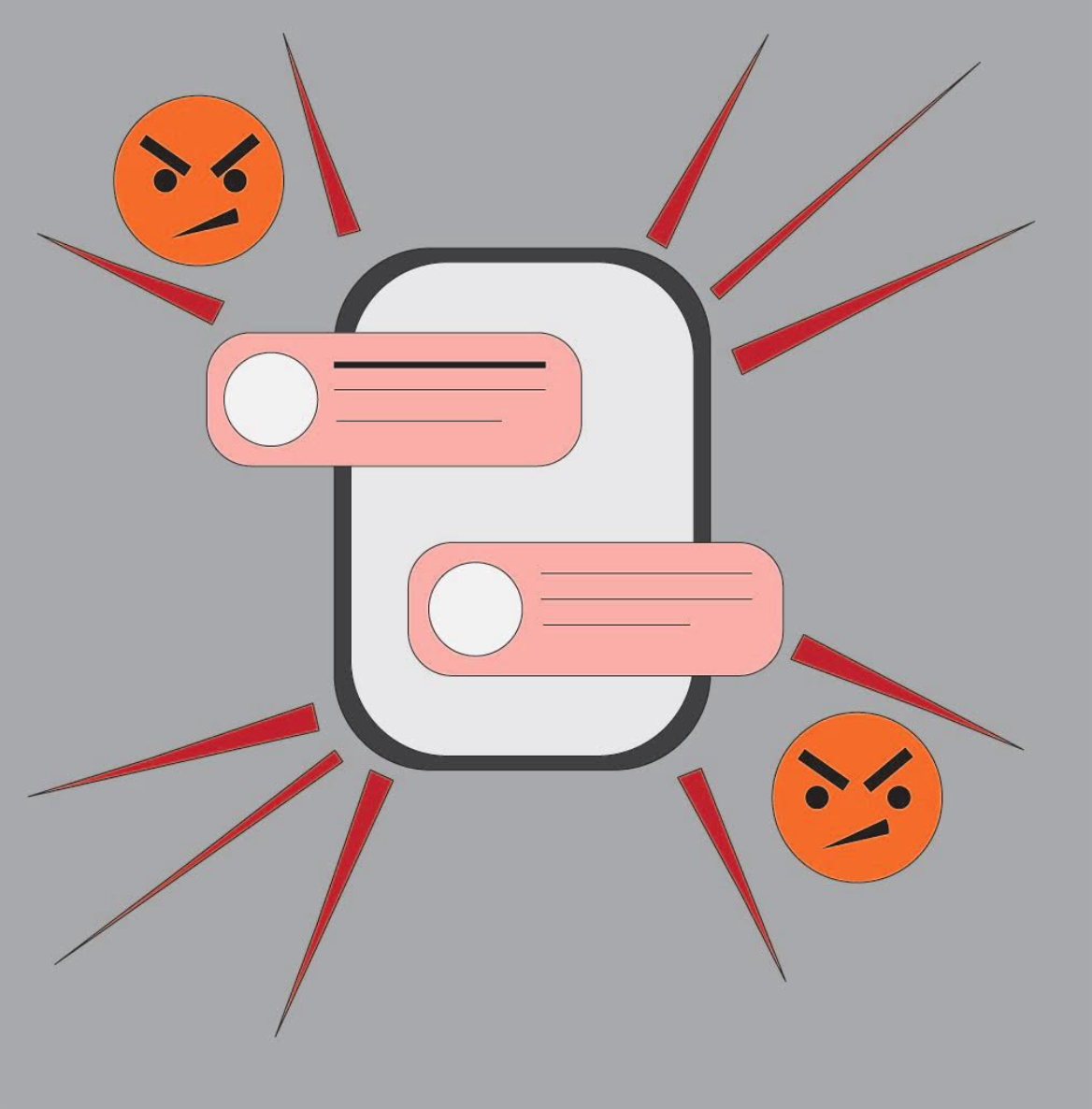The toxicity of rage bait content
How rage baiting undermines trust and spreads division in online communities
Design by Isha Patel
Isha Patel, Staff Writer
Rage baiting refers to a manipulative strategy used to bring out emotional reactions from audiences. Content creators often use this tactic to provoke anger or joy, seeking increased engagement and income. It’s a strategy thriving right now on social media, due to the spike in controversial major events. While it might seem harmless in some cases, the consequences of rage baiting can be severe, affecting viewers and creators.
One well-known example of rage baiting comes from the beauty influencer Meredith Duxbury. Duxbury gained fame for her makeup tutorials where she used an unusually large amount of makeup and shared makeup looks that sparked discussions. These discussions questioned why she would do her makeup in that particular way and how it may cause other issues such as wasting products. While her content may cause sparse negative comments, it doesn’t compare to the more harmful consequences seen in other instances of rage baiting such as influencers promoting products that they have no previous knowledge about. Take the influencers that intentionally spread misinformation and fuel political and social controversy. These creators can spark real-world consequences that can lead to division, violence, or other intense decisions based on misinformation.
Platforms like X (formerly Twitter) are another example of a rage bait haven. Duxbury’s content in comparison to the outrage-fueled discussions included on X, shows a big difference in intent and impact. The pressure to create provocative content has intensified as algorithms prioritize views and likes, resulting in a toxic cycle of negativity. While some forms of baiting can be lighthearted, the overall trend is getting out of control on platforms such as X, where posts about current issues in society can provoke strong reactions within minutes. It's crucial to reconsider this content and start a shift toward more positive and meaningful discussions.
Rage baiting has become more common since the rise of platforms like TikTok and increasing divisions on social media. At one point, creators aimed for laughs or positive engagement. Now, many resort to rage-baiting so they can stand out. As algorithms prioritize content that generates strong reactions, creators feel pressured to push boundaries. The real consequences of rage baiting extend beyond just engagement. For viewers, constant exposure to this can create anxiety and frustration, altering our perception of reality. This can even lead to desensitization to important issues.
For creators, the pressure to continuously produce this kind of content can lead to creators compromising their morality and straying away from what they truly believe. This is arguably much more important than views as many lose sight of their original intent of being an influencer and end up showing negativity just to keep their audience engaged.
Some may argue that not all baiting is harmful. Plenty of creators playfully tease or create content that isn’t necessarily toxic. For instance, lighthearted challenges or humorous commentary can entertain viewers just as well. However, we must recognize that while some forms of baiting may seem harmless, the trend, as a whole, has turned into something more dangerous. As creators chase viral content, they can disregard the consequences of their actions. The boundaries between lightheartedness and harmful outrage slowly fade away leading to an increasingly toxic environment.
Rage baiting may seem like an easy path to virality but can lead to negative outcomes. Whether it’s heightened anxiety among viewers or moral conflicts for creators, the effects are serious. We need to reconsider our engagement with this content and expect better from those we choose to follow on social media. The world needs more positivity and understanding, and we need to work on changing the conversation to get there.


